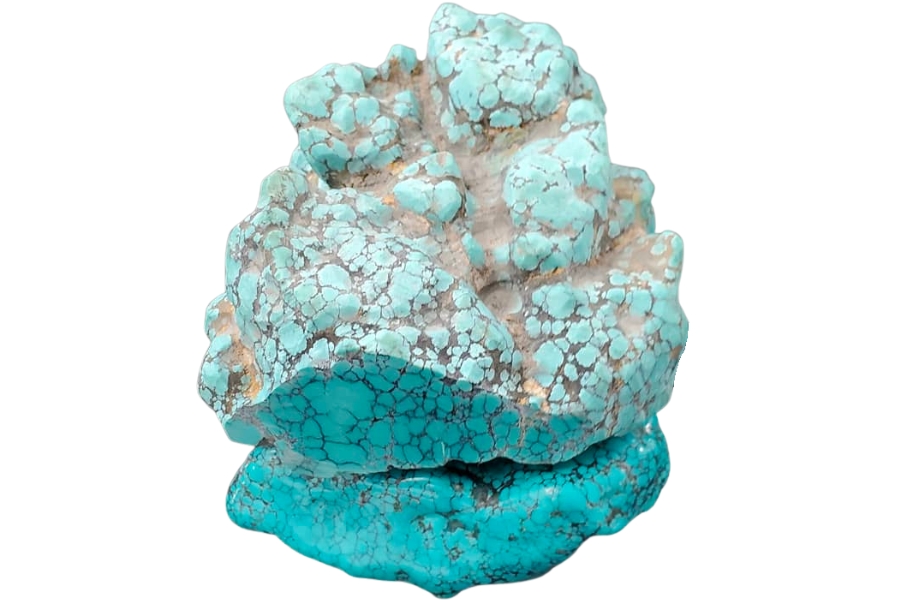Turquoise is a beautiful blue-green stone that has captured the hearts of many. Here in our state, with its diverse landscapes and rich geological history, hunting for turquoise can be an exciting adventure.
This article will guide you to the best spots for finding turquoise in our state and share helpful tips to make your search successful.
So, let’s dive in and explore the best places where you can find Turquoise easily!
How Turquoise Forms Here
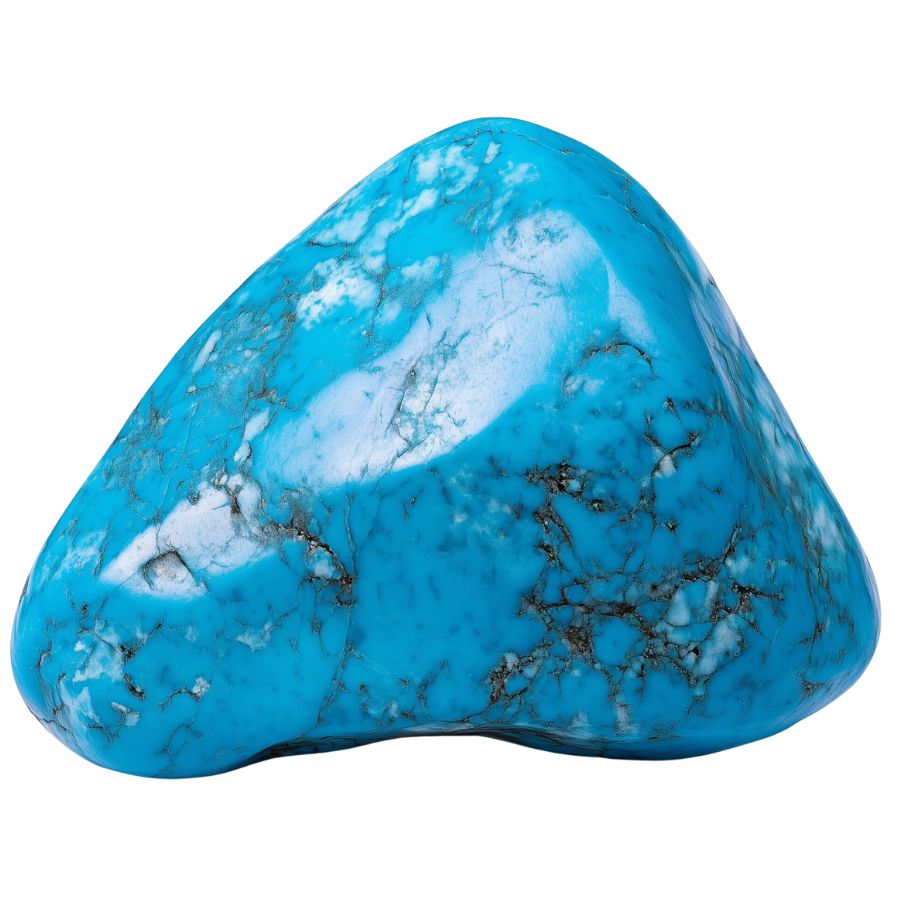
Turquoise forms through a unique process involving water and minerals. It begins when acidic water seeps into the ground, moving through rocks that contain copper and aluminum.
As this water interacts with these minerals, it breaks them down and allows the copper and aluminum to combine with phosphorus, creating turquoise.
This usually happens in shallow areas, often less than 20 meters deep, where the environmental conditions are just right.
This mineral typically fills cracks and cavities in rocks, often in dry, desert-like areas. The presence of iron can also influence its color, giving it beautiful shades of blue and green.
Over time, the turquoise hardens, resulting in the stunning gem we see today, prized for its vibrant hues and unique patterns.
The Types Of Turquoise Found in the US
Turquoise comes in a variety of stunning types, found in the US as well as in our state. Here are the types of turquoise found in the US:
Kingman Turquoise
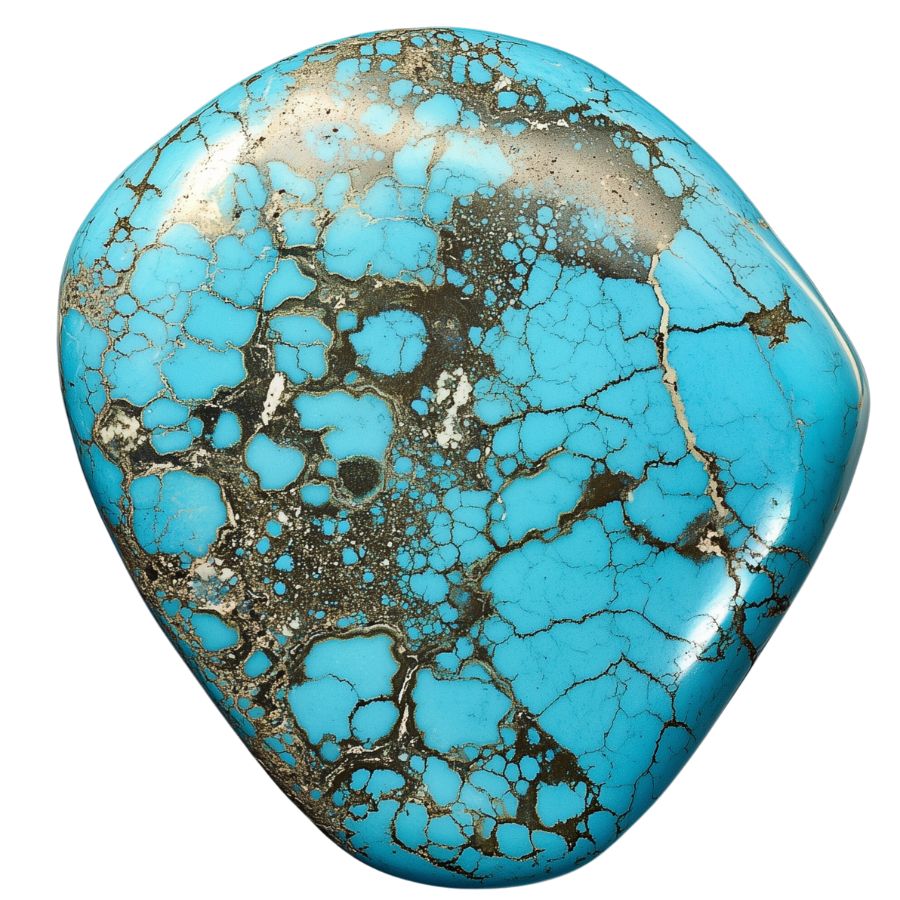
Kingman Turquoise showcases a vibrant range of colors from pale green to deep “high blue.” Its matrix patterns can include white, light brown, or black veining, setting it apart from other turquoise types.
This stone is often stabilized to enhance its durability and color, allowing for broader use in jewelry making. The natural Kingman turquoise typically presents a medium blue hue with a water web matrix.
Kingman Turquoise is recognized as one of the most sought-after American turquoise. Its consistent supply has made it a staple in Native American jewelry and artisan crafts, contributing to its ongoing popularity.
Carico Lake Turquoise
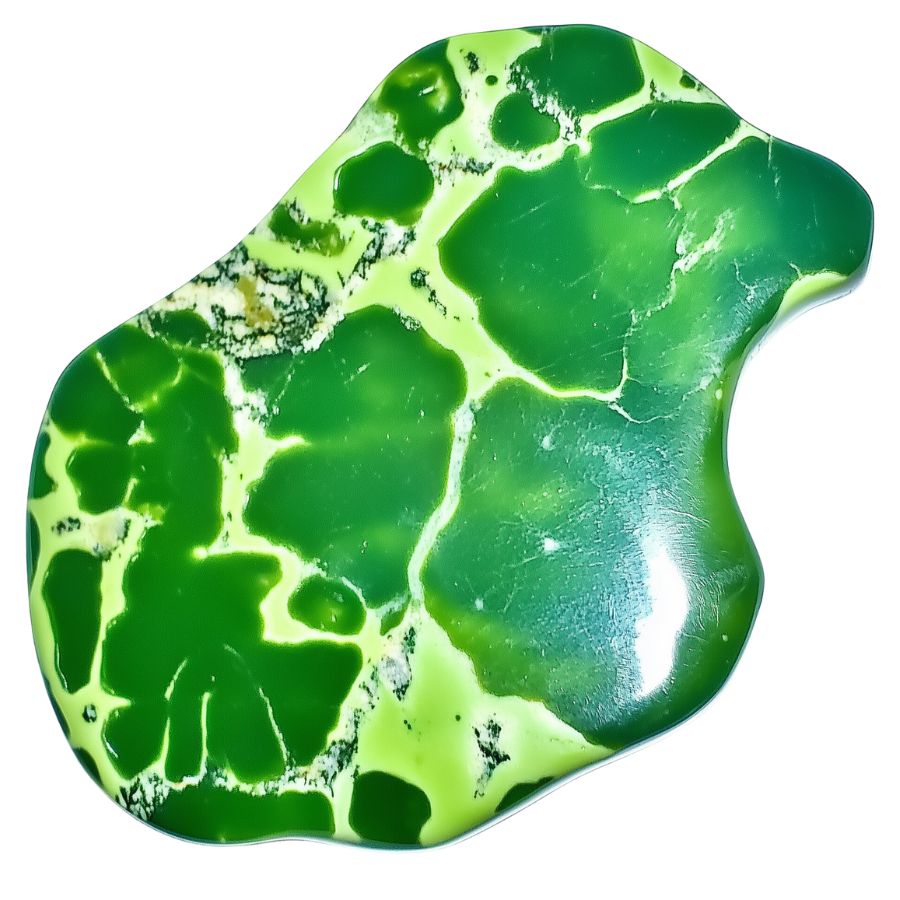
Carico Lake Turquoise is known for its clear robin’s egg blue to vibrant lime green colors. It often features a unique spider-web matrix in brown or, more rarely, black, adding texture and shine to the stone.
What makes this stone special is its high zinc concentration, which gives it an electric lime-green hue. This color is both rare and desirable among turquoise varieties.
Gem-quality Carico Lake Turquoise is scarce, making up less than 3% of the mine’s annual output. This rarity, combined with its natural beauty, makes it a prized item for collectors and enthusiasts alike.
Lone Mountain Turquoise
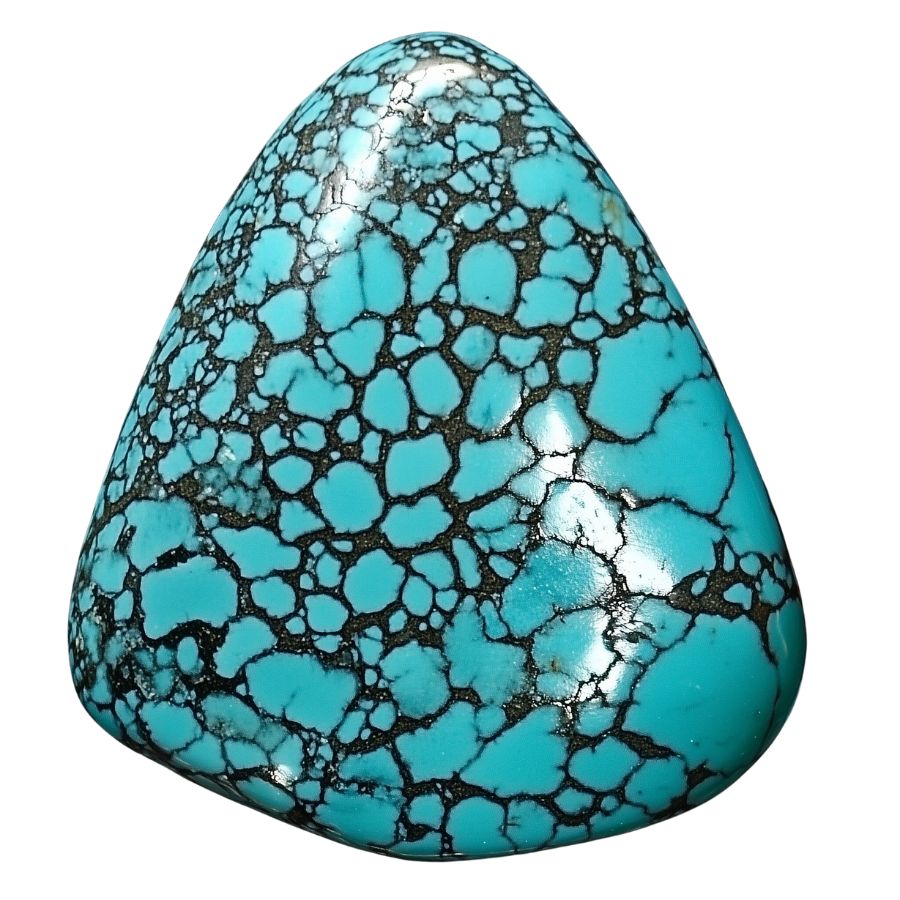
Lone Mountain Turquoise is known for its bright blue to deep green colors, often featuring intricate spider web matrix patterns. These fine lines create a web-like design, enhancing its visual appeal.
This stone stands out for its exceptional hardness and color retention. It maintains its vibrant hue over time, a quality not common in all turquoise varieties.
Lone Mountain Turquoise is highly valued in the collector’s market, second only to Lander Blue Turquoise. Its ability to produce high-quality spider web turquoise makes it a favorite among jewelry artisans and collectors.
Morenci Turquoise
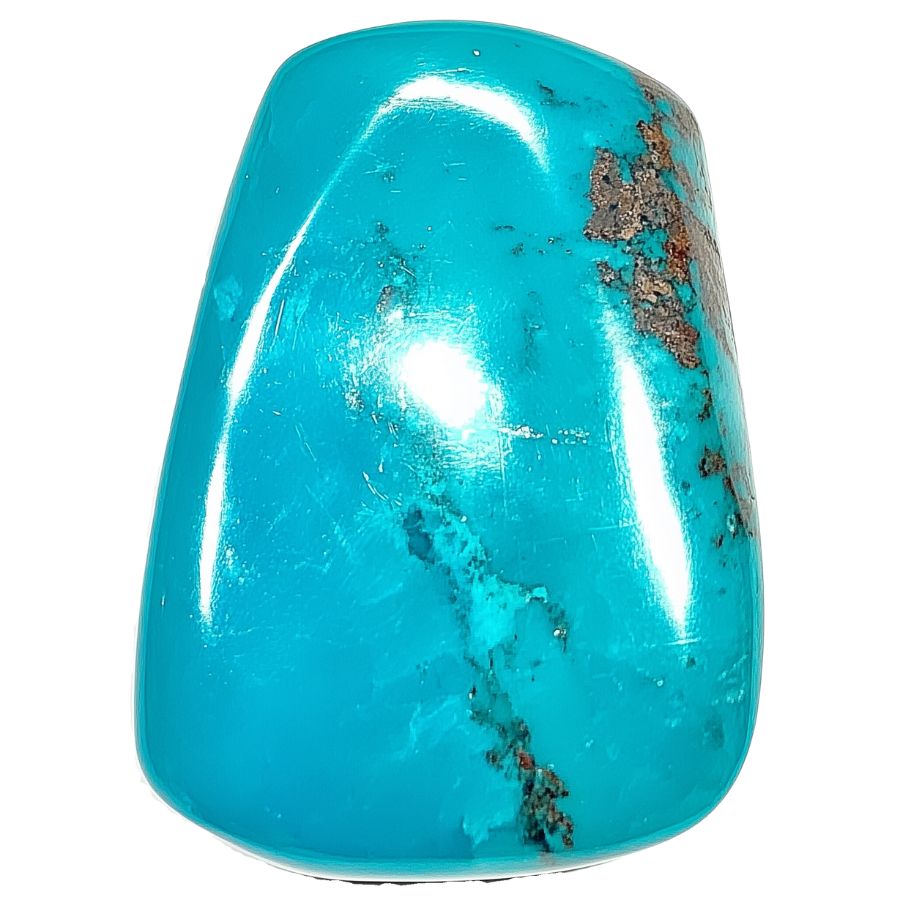
Morenci Turquoise stands out with its deep blue color, a result of its high copper content.
Its most striking feature is the iron pyrite matrix, which gives it a metallic shimmer when polished. Some pieces also show a water web matrix, creating dark blue webbing patterns.
This stone is no longer mined, making it rare and highly collectible. All available Morenci Turquoise comes from mining operations that stopped in 1984.
High-grade pieces, known for vibrant blues and pyrite matrix, make up less than 10% of the total yield.
Pilot Mountain Turquoise
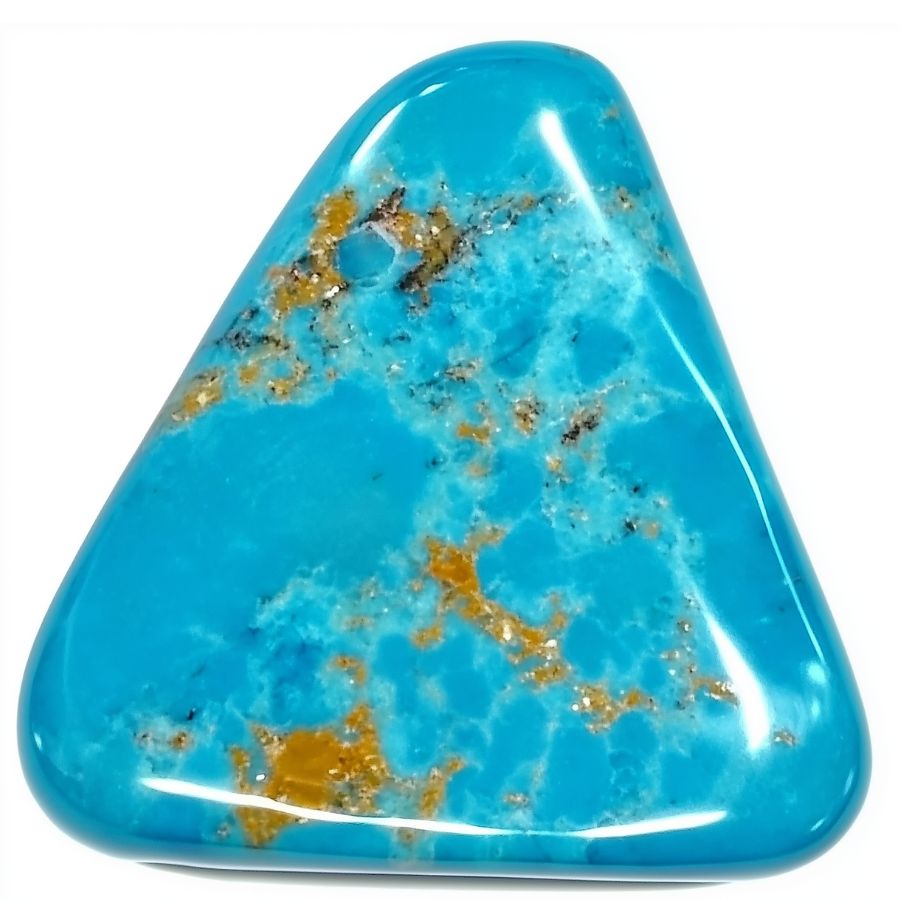
Pilot Mountain Turquoise catches the eye with its bright to dark blue hues, often showing a greenish tint.
What makes it special is its brownish-red limonite matrix, creating beautiful mottled patterns. The stone forms in hard veins, thin seams, or nuggets.
This turquoise has an interesting history, first mined around 1930. It’s known for its limited availability, with only 150 to 200 pounds of rough stone extracted twice a year. This scarcity adds to its appeal.
The unique mottled patterns of the limonite matrix make Pilot Mountain Turquoise a favorite for decorative pieces and jewelry.
Sleeping Beauty Turquoise
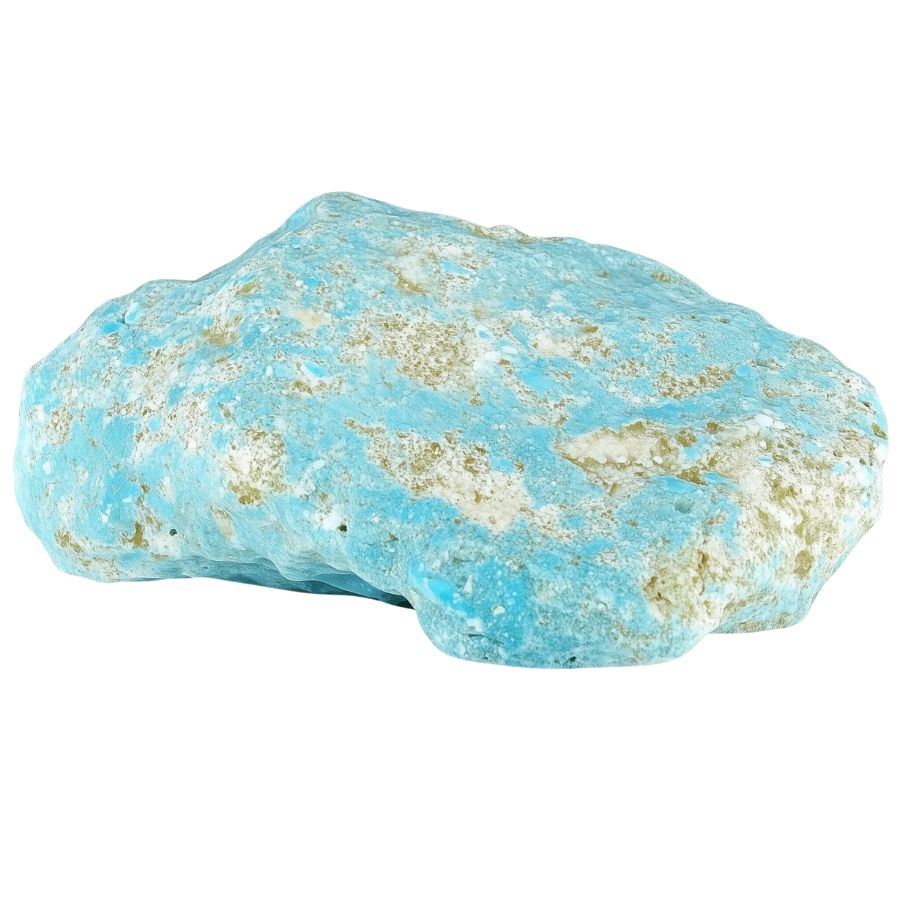
Sleeping Beauty Turquoise is famous for its vivid sky-blue color. Unlike many other turquoise types, it has little to no veining or matrix, giving it a pure, consistent look. The color can range from light robin’s egg blue to deeper sky blue.
This stone is naturally hard, which means it doesn’t need stabilization for use in jewelry. This quality makes it popular with jewelers. The Sleeping Beauty mine closed in 2012, making the stone rarer and more valuable.
Sleeping Beauty Turquoise became a hit in the 1970s and 80s, used in both Native American jewelry and mainstream fashion. Its consistent quality and vibrant color have made it a standard in Southwestern jewelry.
Bisbee Turquoise
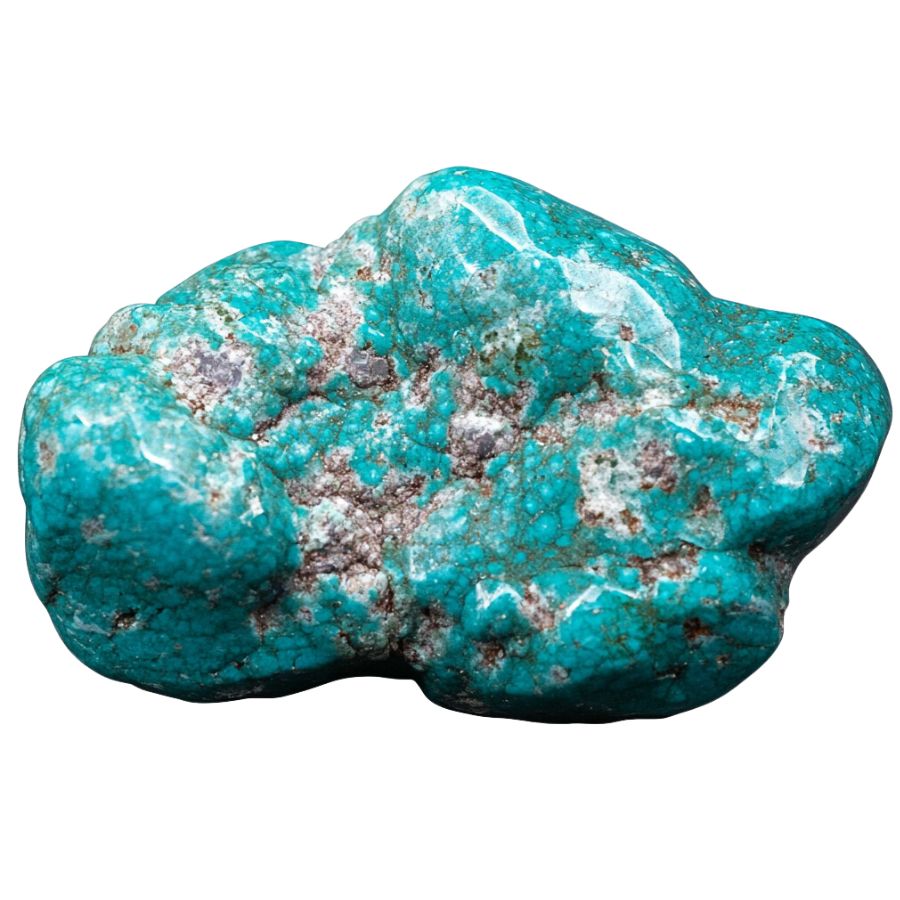
Bisbee Turquoise stands out with its vibrant blue shades, ranging from deep indigo to light robin’s egg blue. Green hues are less common but still occur.
Its distinctive matrix often displays a striking spiderweb pattern against a reddish-brown backdrop.
This stone’s unique appearance comes from its host rock color and gloss. Unlike some turquoise with metallic matrices, Bisbee’s matrix is typically more earthy and varied in color.
Bisbee Turquoise is highly valued for its quality and rarity. Its historical significance, being one of the oldest turquoise sources in North America, adds to its appeal among collectors and enthusiasts.
Royston Turquoise
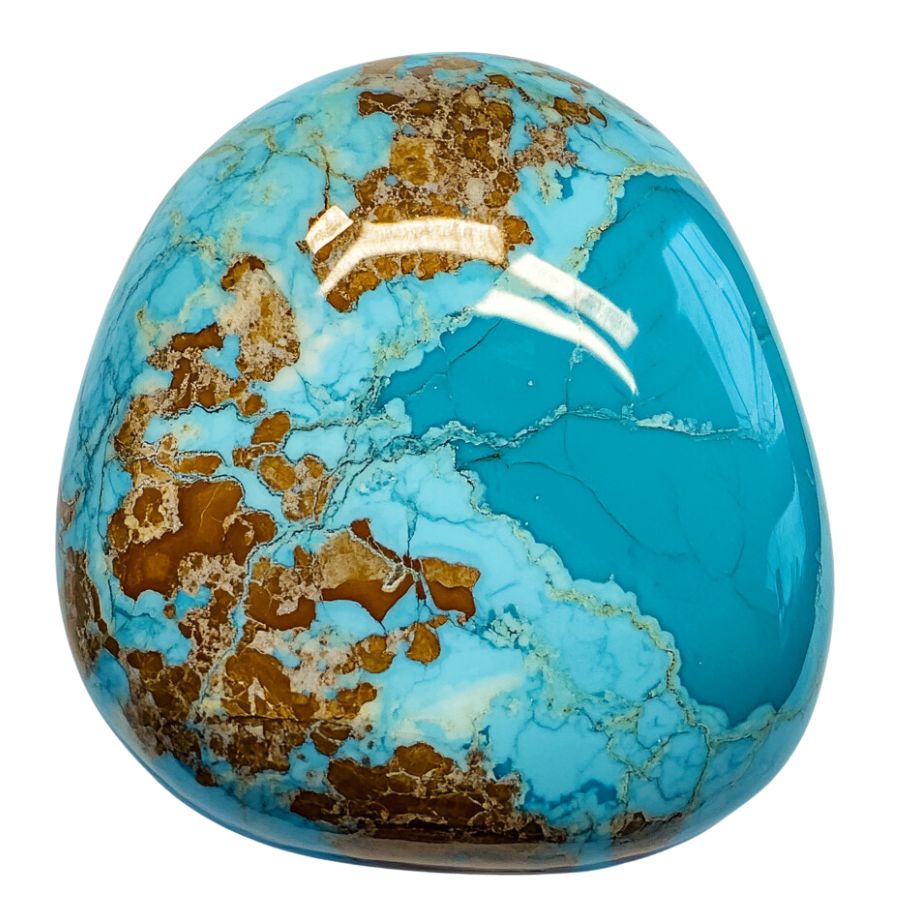
Royston Turquoise is a gem of many faces. Its colors can shift dramatically, even within a single stone.
You might find a piece that starts as a soft blue and gradually transforms into a rich green. This color play is a hallmark of Royston Turquoise.
The stone’s matrix is equally fascinating. The matrix can create intricate landscapes within the turquoise, resembling golden sunsets or stormy skies.
Royston Turquoise is also known for its ability to take an exceptionally high polish. This quality, combined with its natural hardness, makes it a favorite for jewelry that can withstand daily wear.
Dry Creek Turquoise
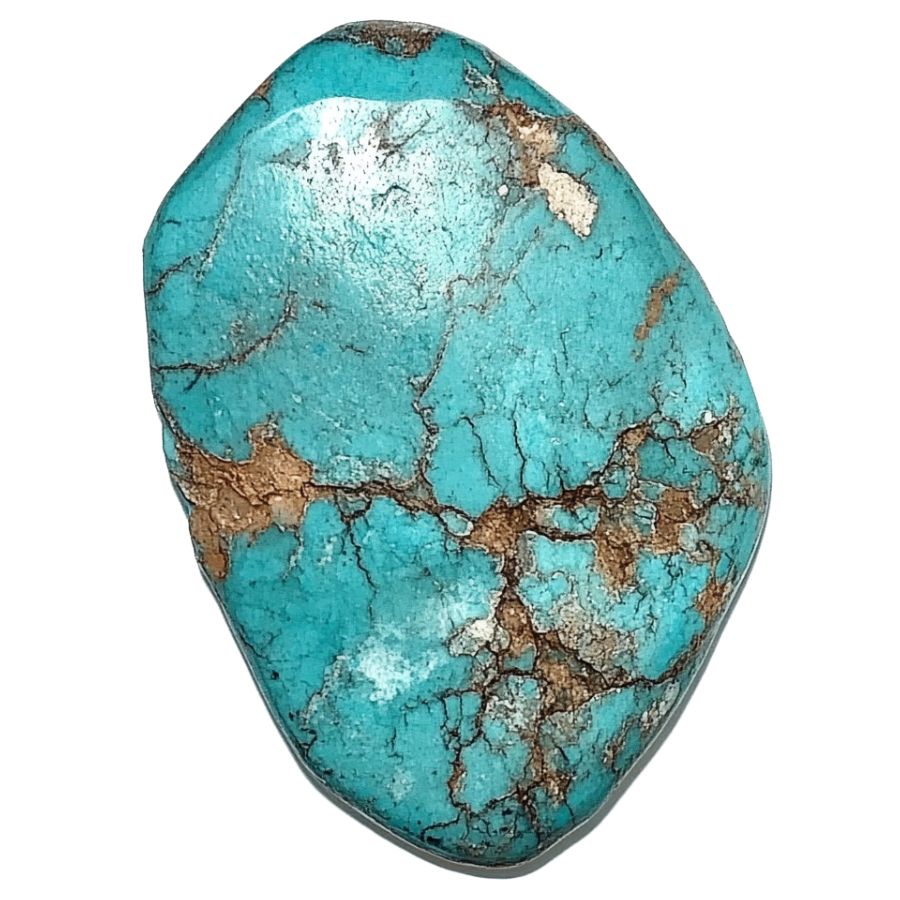
Dry Creek Turquoise stands out with its pale pastel blue color, similar to Larimar. It often has light brown, golden yellow, or orange webbed matrices, adding to its beauty.
Unlike many turquoise types, it’s naturally hard and takes a stunning polish without treatment.
This stone is quite rare. It was discovered in the 1990s in an area with low levels of heavy metals. These metals usually give turquoise its bright colors. The unique geological setting results in Dry Creek’s captivating pale blue hue.
The natural hardness and ability to take a high polish make Dry Creek Turquoise special.
Ithaca Peak Turquoise
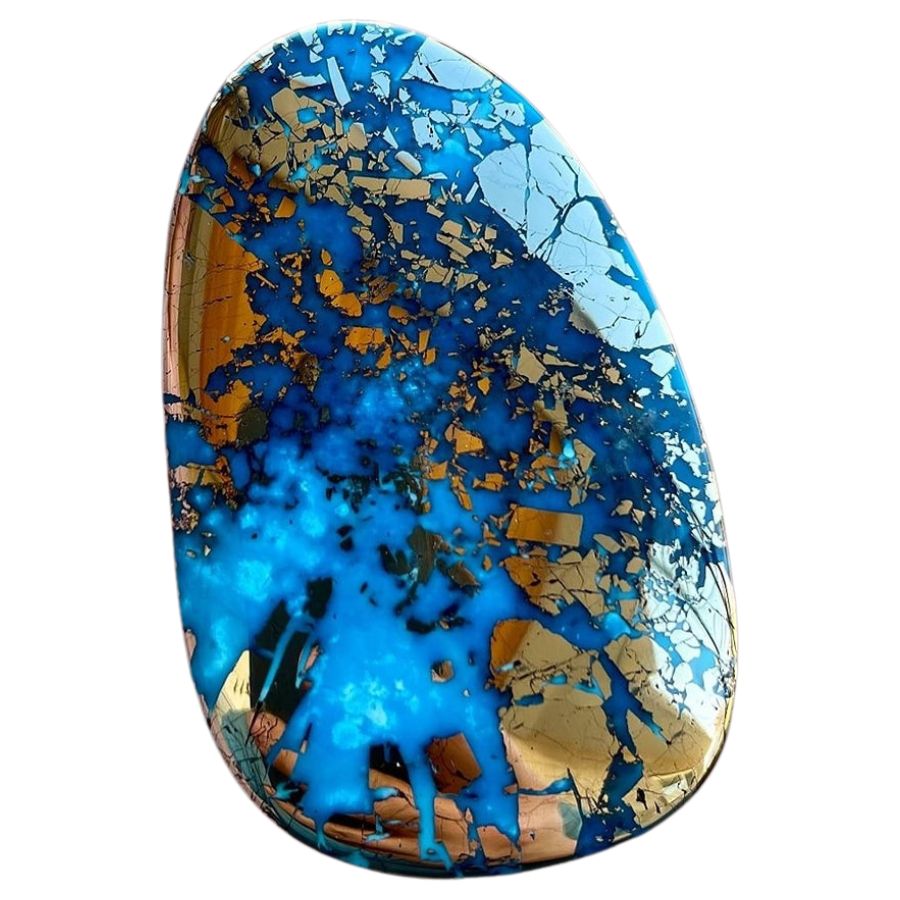
Ithaca Peak Turquoise is known for its stunning range of blues. It can be light blue with black spider-webbing or deep rich blue with black matrix.
Some pieces even have quartz matrix and pyrite inclusions. The most valued stones have vibrant to dark blues with good pyrite inclusions.
What makes this stone unique is its pyrite. In Ithaca Peak Turquoise, the pyrite often has a brassy color. This helps tell it apart from similar stones like Morenci turquoise.
Recently mined Ithaca Peak Turquoise looks different from older pieces. The new stones are lighter blue to green and usually don’t have a webbed matrix. This change in appearance over time adds to the stone’s interesting history.
What Raw Turquoise Looks Like
When you’re going to collect the raw turquoise, it’s important to know what to look for. Here are some tips to help you identify genuine raw turquoise:
Look for the Blue-Green Color
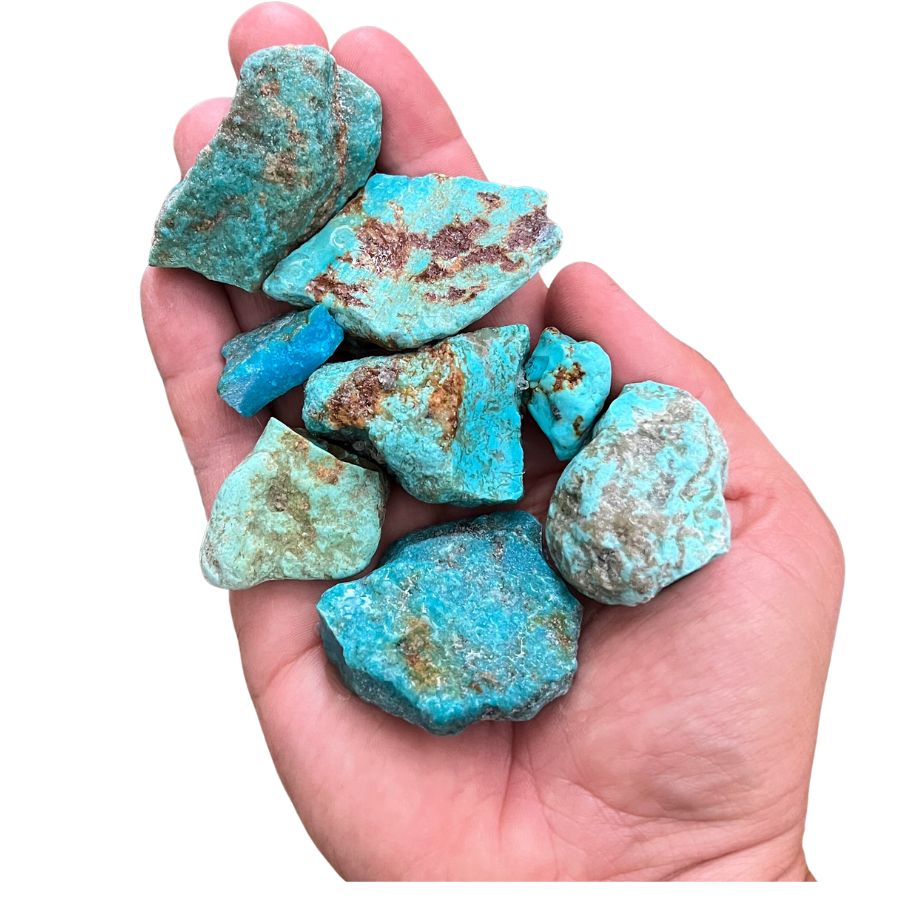
The color is the big clue. Rough turquoise is often blue or green, sometimes with hints of both.
The blue comes from copper, while the green hints at more iron or other minerals.
Real turquoise tends to have a more vibrant, consistent color. If it looks too perfect, like solid blue or green with no variations, be cautious. Nature isn’t that perfect!
Assess the Density and Weight
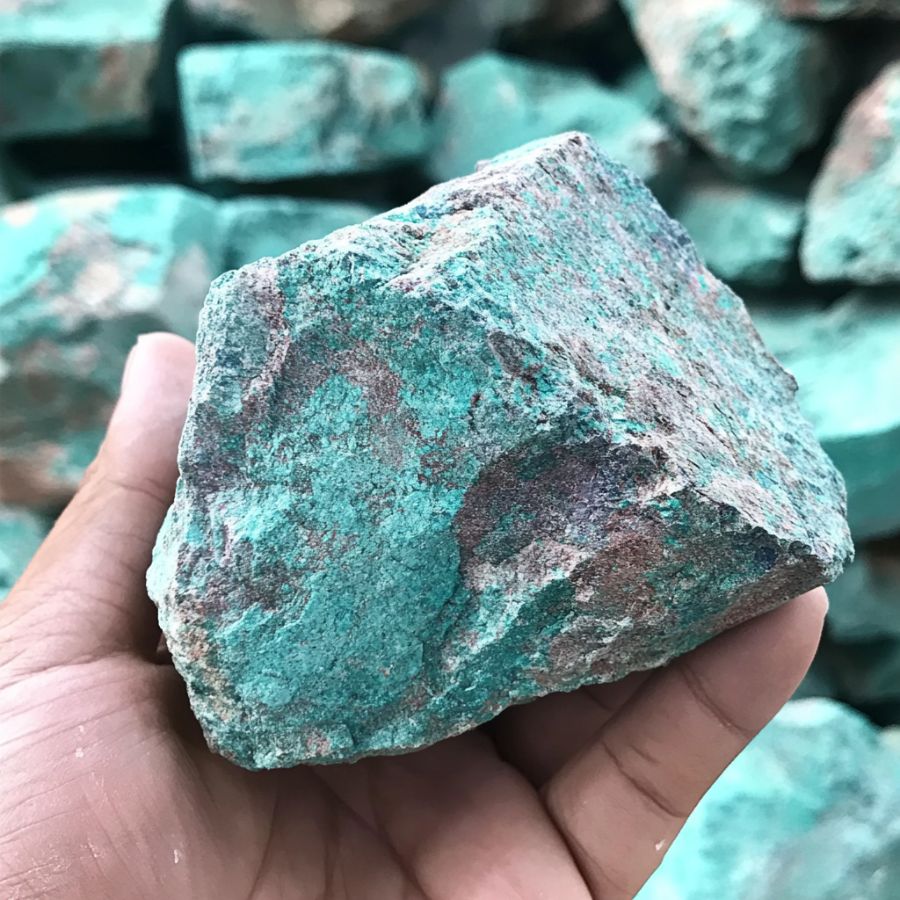
Pick up the stone and feel its weight. Real turquoise is pretty dense, so it feels heavier than it looks. If the stone feels too light, it might not be genuine.
Authentic turquoise has a specific gravity of about 2.5 to 2.9, making it heavier than many imitations.
The density comes from the minerals packed tightly together over millions of years. A heavier stone usually means a better-quality piece.
Check for a Glassy or Waxy Luster
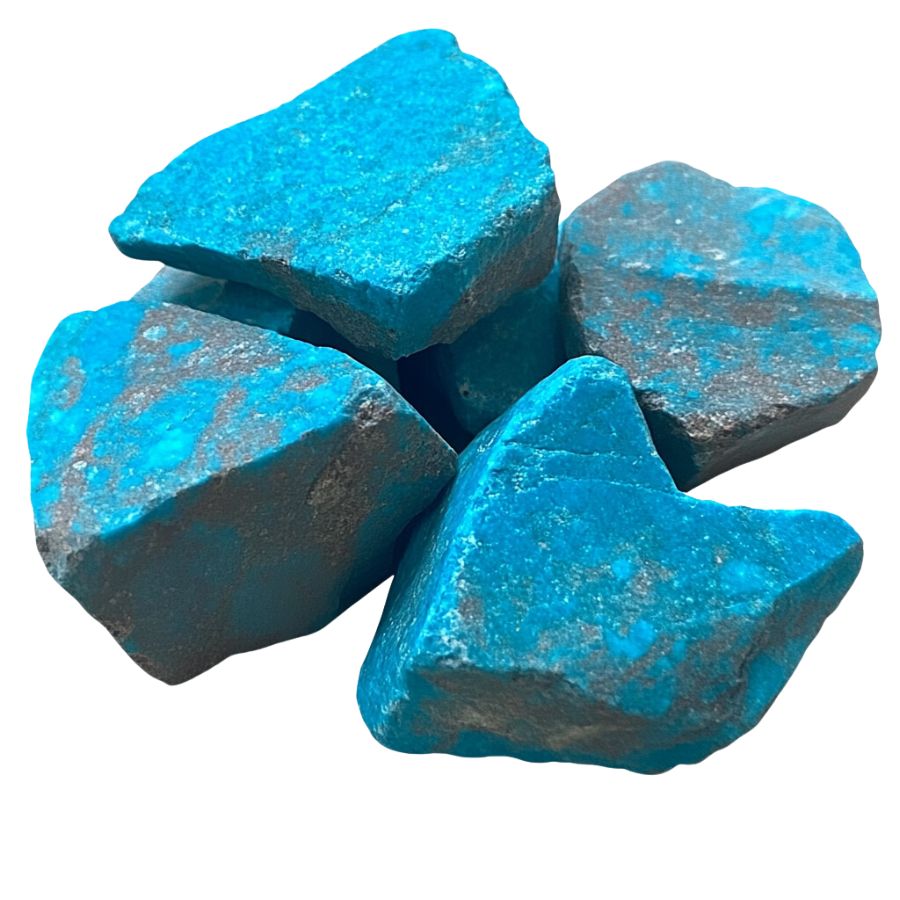
Rough turquoise often has a glassy or waxy luster, not too shiny but not dull either. When you hold it up to the light, the surface might have a soft, smooth sheen. This luster is key.
A rough piece with a good luster usually indicates that it’s real turquoise and not a fake. You’ll notice that it reflects light in a muted way, not too bright.
Consider the Stone’s Shape and Texture
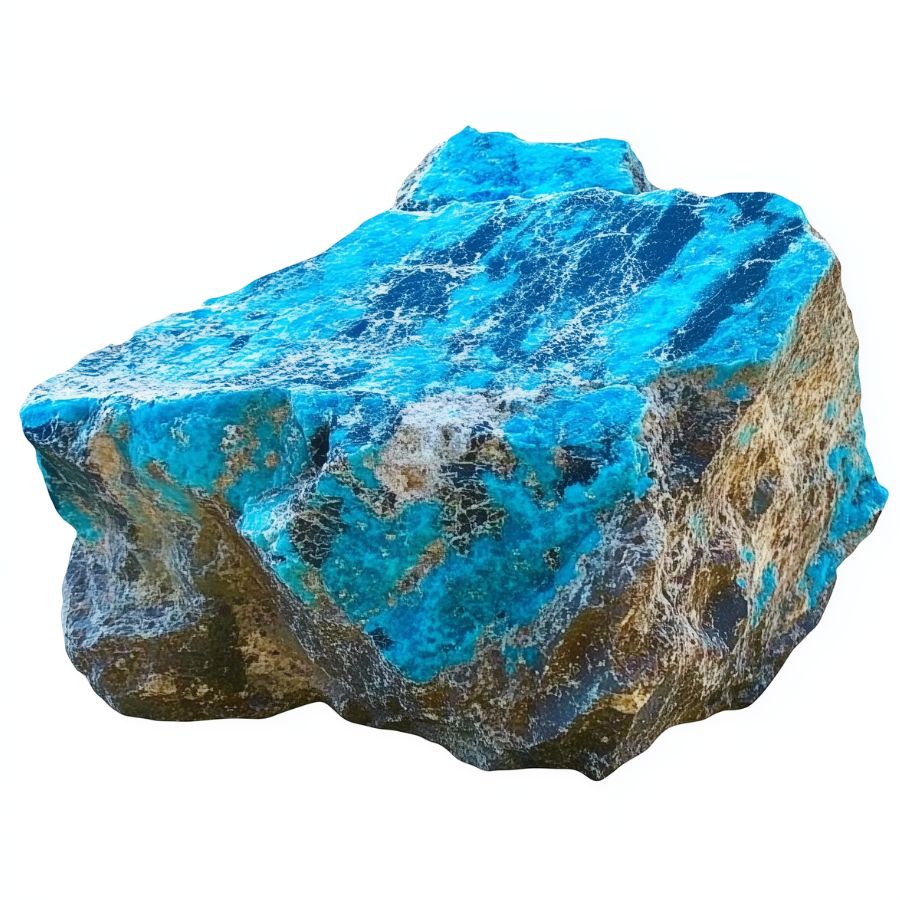
Rough turquoise isn’t always smooth. It often has a bumpy, uneven texture because it forms in cracks and crevices of other rocks.
The stone’s shape might be irregular or lumpy. This natural texture is a telltale sign that you’re holding real turquoise and not a polished or treated piece.
A Quick Request About Collecting
Always Confirm Access and Collection Rules!
Before heading out to any of the locations on our list you need to confirm access requirements and collection rules for both public and private locations directly with the location. We haven’t personally verified every location and the access requirements and collection rules often change without notice.
Many of the locations we mention will not allow collecting but are still great places for those who love to find beautiful rocks and minerals in the wild without keeping them. We also can’t guarantee you will find anything in these locations since they are constantly changing.
Always get updated information directly from the source ahead of time to ensure responsible rockhounding. If you want even more current options it’s always a good idea to contact local rock and mineral clubs and groups
Tips on where to look
Once you get to the places we have listed below there are some things you should keep in mind when you’re searching:
Riverbeds
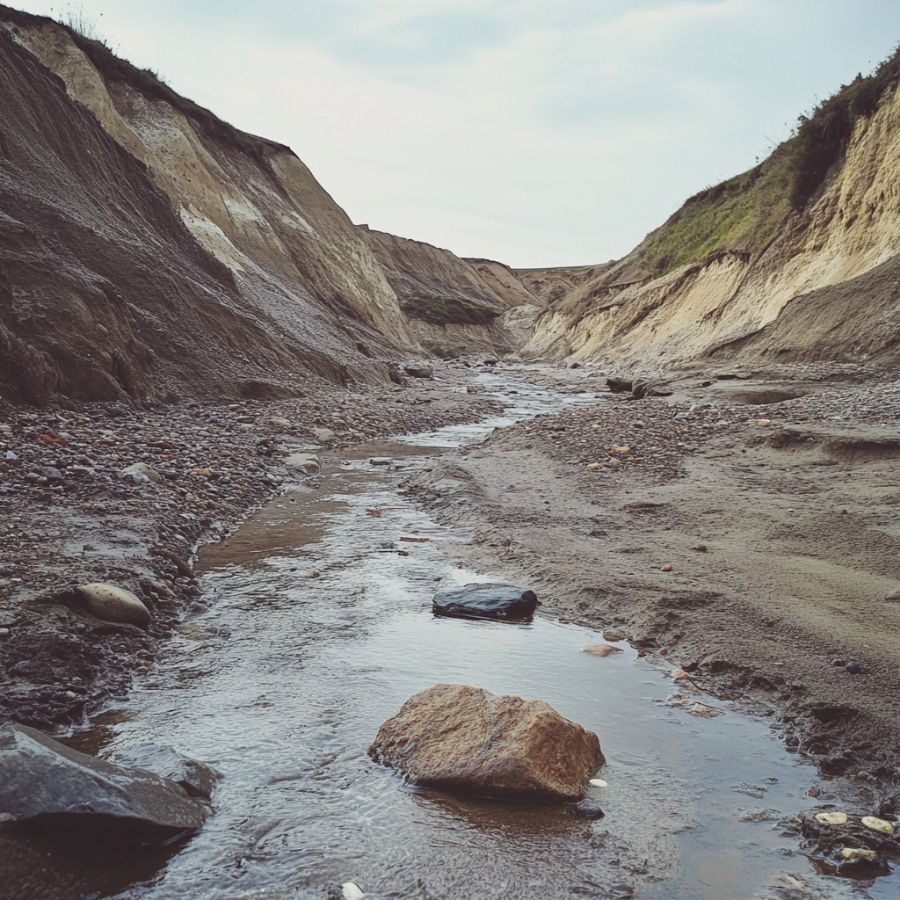
Look for turquoise in riverbeds. Over time, water flow can expose hidden stones.
Sediment may hold the gems you’re after. Be prepared to dig through gravel and dirt to find them.
Abandoned Mines
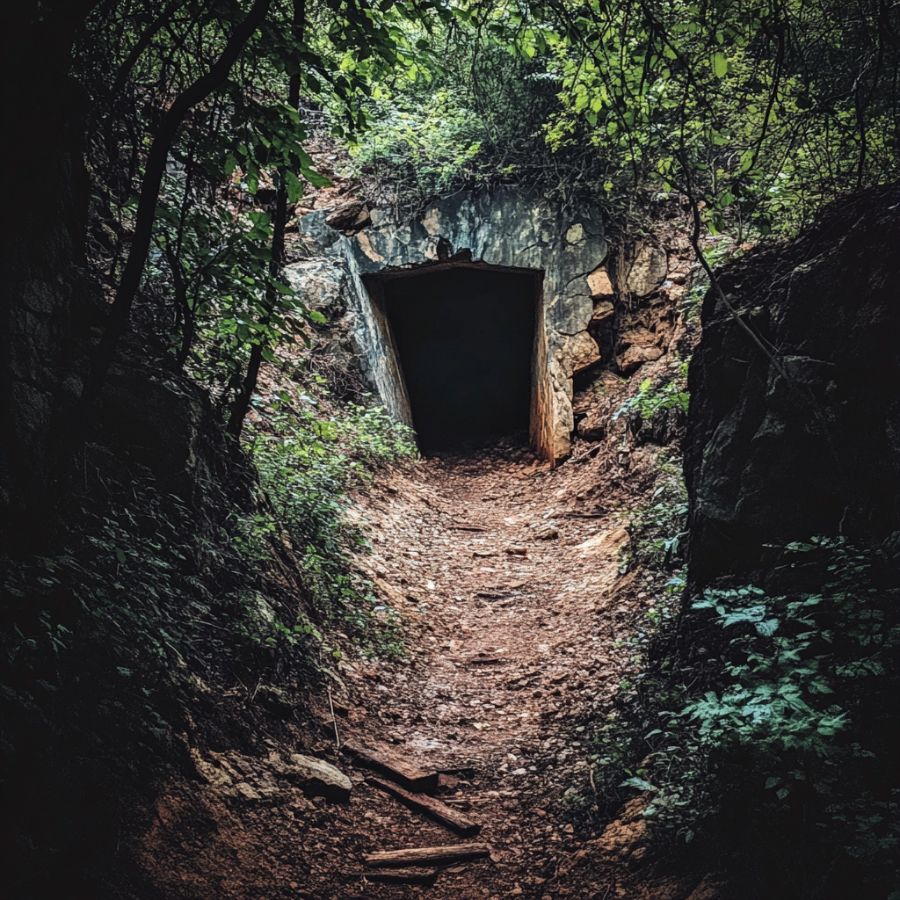
Old mines can be treasure troves for turquoise. These sites often have loose rocks where turquoise might be hiding.
Always be careful while exploring abandoned areas, though.
Hillsides
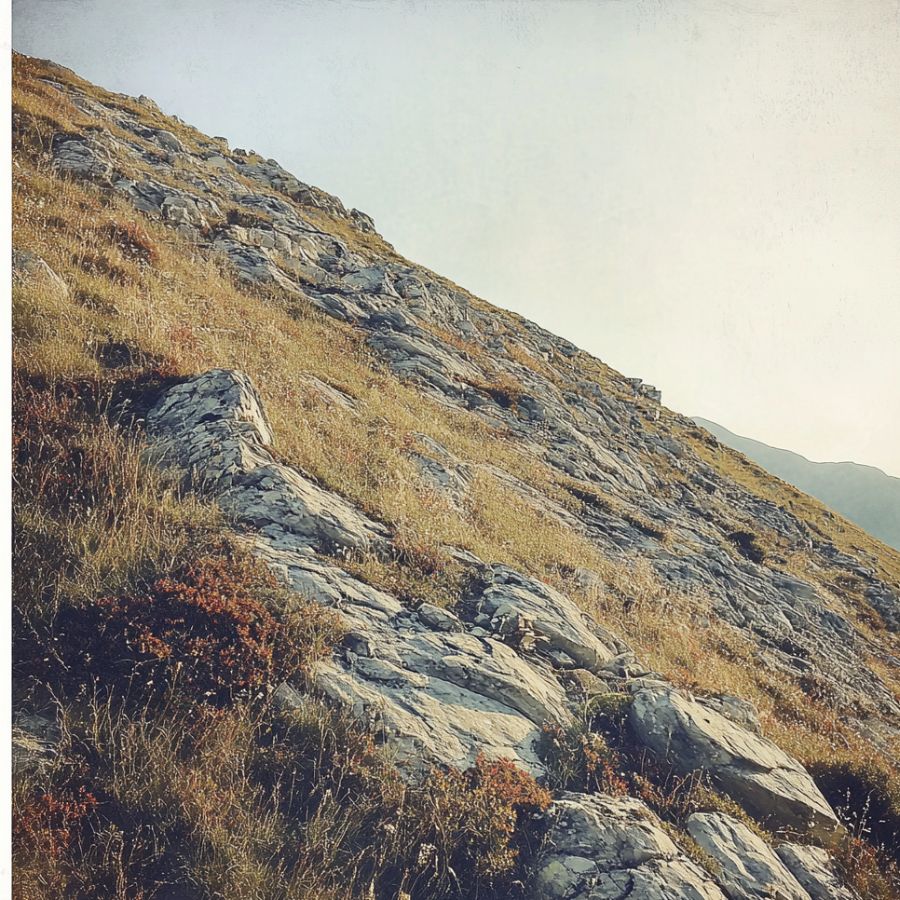
Check hillsides, especially where erosion is visible. Rain and wind can uncover layers of earth, exposing turquoise.
It’s a bit of a hunt, but it can be rewarding. Sometimes, you’ll find small stones just lying on the surface.
Rocky Outcrops
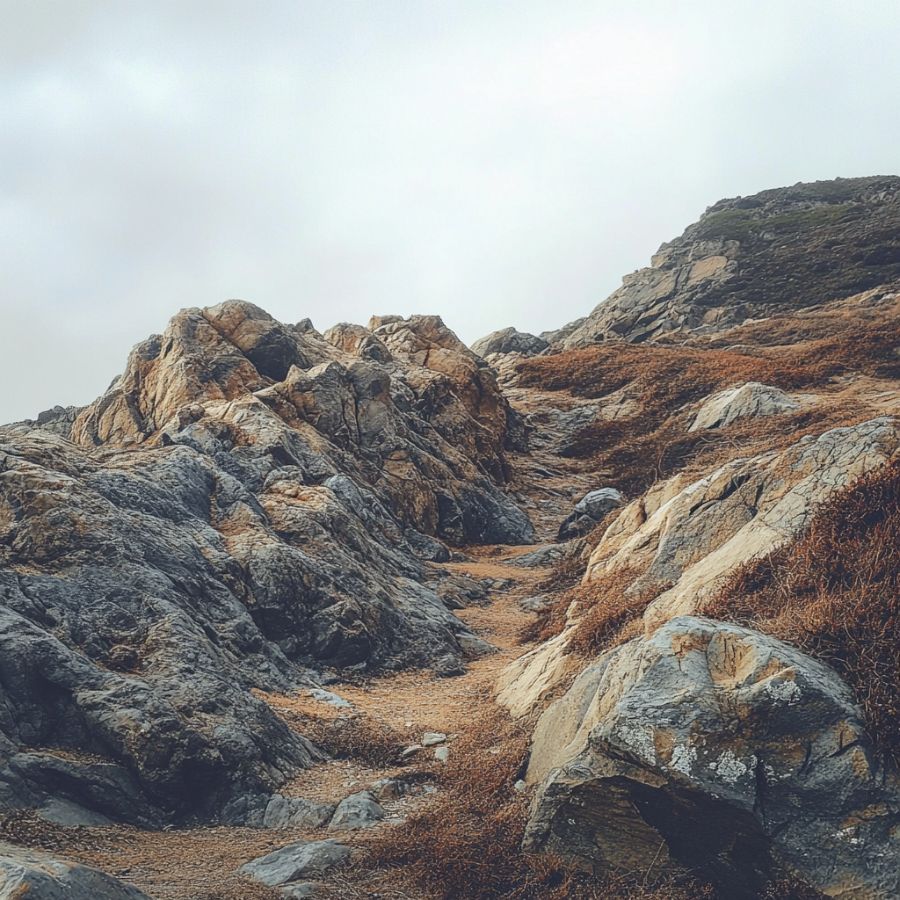
Rocky outcrops are great places to search. They are full of minerals and might have turquoise.
Explore the cracks and crevices. Turquoise often hides in these tight spaces.
The Types Of Turquoise Found In Oregon
When you’re out exploring the depths of Oregon to find turquoise, be aware that these are the different colors it may come in:
- Sky blue turquoise
- Blue-green turquoise
- Green turquoise
The Best Places To Find Turquoise in Oregon
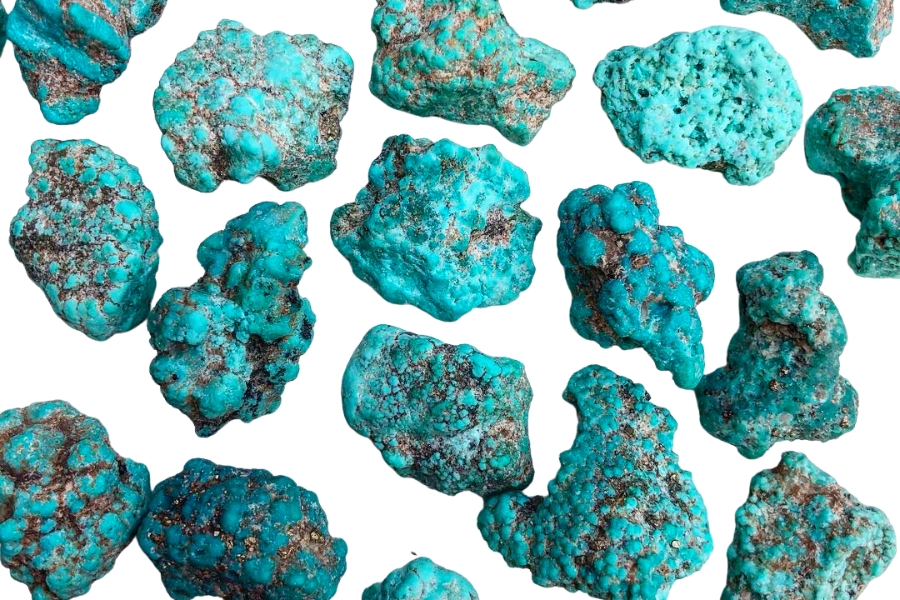
As we said above, Oregon has a plethora of gem mine sites. But if you want to find Oregon turquoise, your best chance to do so is to explore the following proven places that contain them:
Always Confirm Access and Collection Rules!
Before heading out to any of the locations on our list you need to confirm access requirements and collection rules for both public and private locations directly with the location. We haven’t personally verified every location and the access requirements and collection rules often change without notice.
Many of the locations we mention will not allow collecting but are still great places for those who love to find beautiful rocks and minerals in the wild without keeping them. We also can’t guarantee you will find anything in these locations since they are constantly changing.
Always get updated information directly from the source ahead of time to ensure responsible rockhounding. If you want even more current options it’s always a good idea to contact local rock and mineral clubs and groups
Alvord Desert
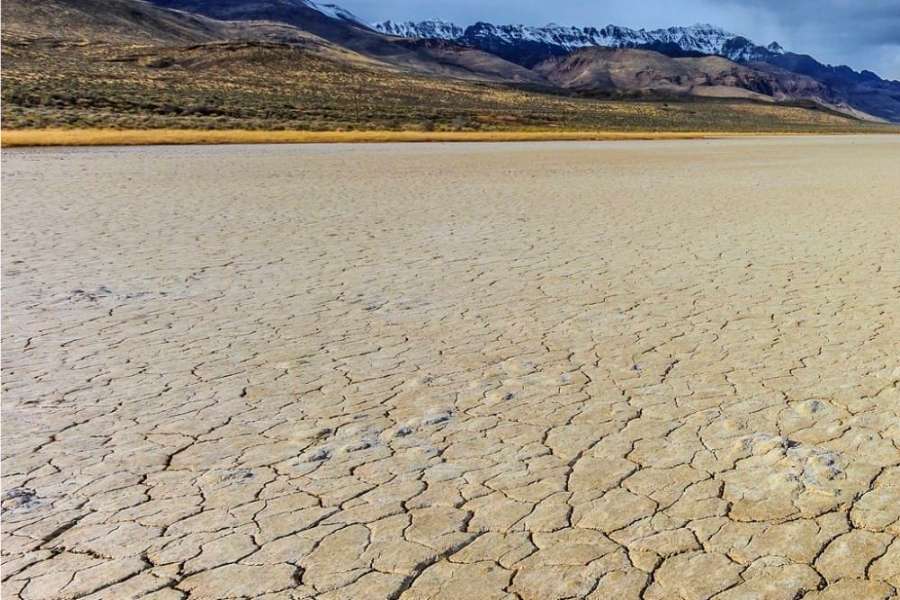
The Alvord Desert is a dry lake bed that stretches over miles, offering a vast playground for rock hunters. Its floor is a canvas of cracked mud, while the surrounding mountains stand as silent witnesses to the geological wonders that took place over millions of years.
The geology of the Alvord Desert is a blend of volcanic and sedimentary rocks, a perfect concoction for turquoise formation. Its terrain is flat and open. The Steens Mountain looms large on the western edge, making the contrasting landscape of flat desert and towering mountains a sight to behold!
If you want to visit, be aware that getting to the Alvord Desert is a journey through Oregon’s scenic landscapes. From Burns, take Highway 78 East, then switch to the Fields-Denio Road which will lead you to the desert.
But before you head out, it’s essential to get familiar with and abide by Oregon’s latest collecting guidelines.
Where we found turquoise in the Alvord Desert
You can find different sizes of turquoise at the Alvord Desert if you explore the areas with exposed bedrock, dry lake beds, or along the slopes and base of the surrounding mountains like Steens Mountain.
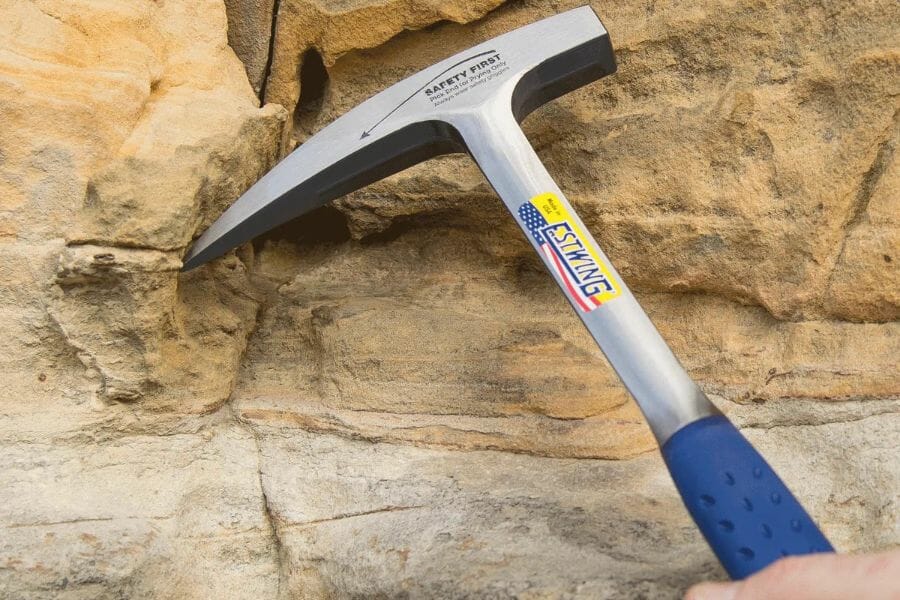
The tools every geode hunter will need
When you're out looking for geodes having the right tools for the job is very important. You don't need a lot for most trips but there are a handful that are critical and will make your life a lot easier.
We get asked a lot about the equipment we use. Over the years we've found a handful of tools that we recommend to both new and experienced geode hunters which we outline in great detail in our complete rockhounding tools and kit guide. These are quality options that also happen to be relatively inexpensive.
Below are the basic tools that make your life so much easier and save you a ton of time. Check out the full guide to see everything we recommend bringing. One quick note, as an Amazon Associate I earn from qualifying purchases but we try very hard to only recommend gear we would use ourselves and often recommend brands you can't find on Amazon.
At a minimum you should have:
1 - Sturdy rock hammer: The Estwing Rock Pick is our standard
2 - Rugged chisels: Try Kendo' 3-piece Chisel Set
3 - Compact shovel: The Koleiya 28-inch shovel works well
4 - Rock screen pan: The Wazakura Soil Sieve Set fits the bill
5 - Eye protection: DeWalt Safety Glasses are cheap and comfortable
6 - Head protection: Malta's Safety Helmet has been our go-to
7 - Jewelers lens with at least 20x magnification: Jarlink's Jewelers Loop is perfect
The geode-finding books that we use most
There are also a few books that have been extremely helpful in the search for gems. These books have great recommendations and tips:
National Audubon Society Field Guide to Rocks and Minerals: North America
Northwest Treasure Hunter's Gem & Mineral Guide
Earth Treasures: The Northwestern Quadrant
We provide links to find these tools on Amazon but some can also be found at your local hardware stores. For more recommendations check out the link to our full tool guide above.
Columbia River
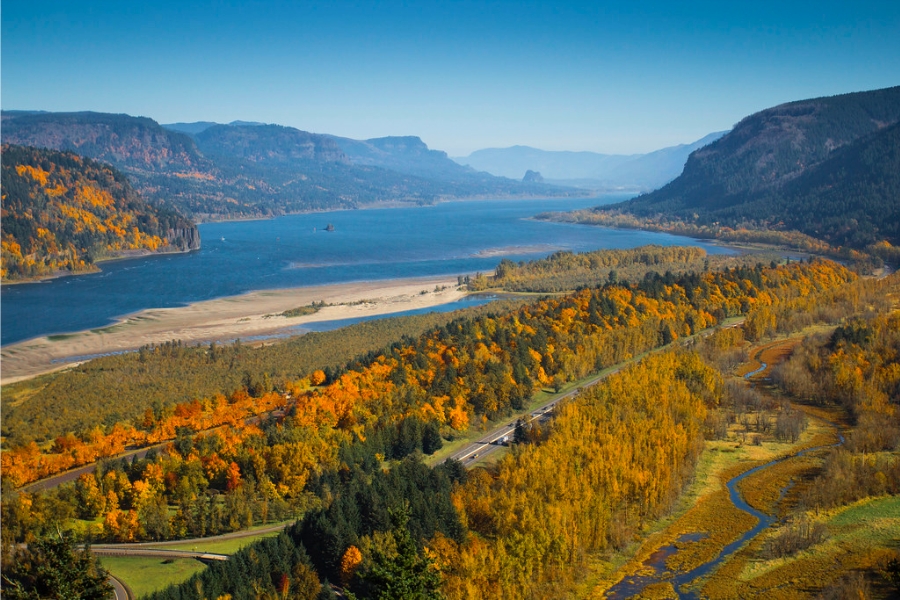
Columbia River is the largest river in the Pacific Northwest. Stretching over 1,240 miles, it begins its journey in the Rocky Mountains of British Columbia, Canada, flowing through diverse terrains to meet the Pacific Ocean.
The part of the river that carves through Oregon is particularly intriguing for rock hunters. As it passes through the Cascade Range, it forms the Columbia River Gorge, a breathtaking landscape of mountains, bluffs, and cliffs.
The gorge is where the river interacts with an active volcanic arc at the edge of a major plate boundary. Its surrounding regions have a rich basaltic geology due to ancient lava flows, part of the Columbia River Basalt Group, which covered northern Oregon around 17 to 6 million years ago.
If you’re coming from Portland and you want to go here, take the I-84 E highway, which will lead you directly to the gorge.
Where we found turquoise at the Columbia River
The mix of volcanic and sedimentary rocks in the Columbia River gorge and nearby areas hold promise of turquoise finds. You can also search for this gem in the swamps near the river itself.
Salem Hills
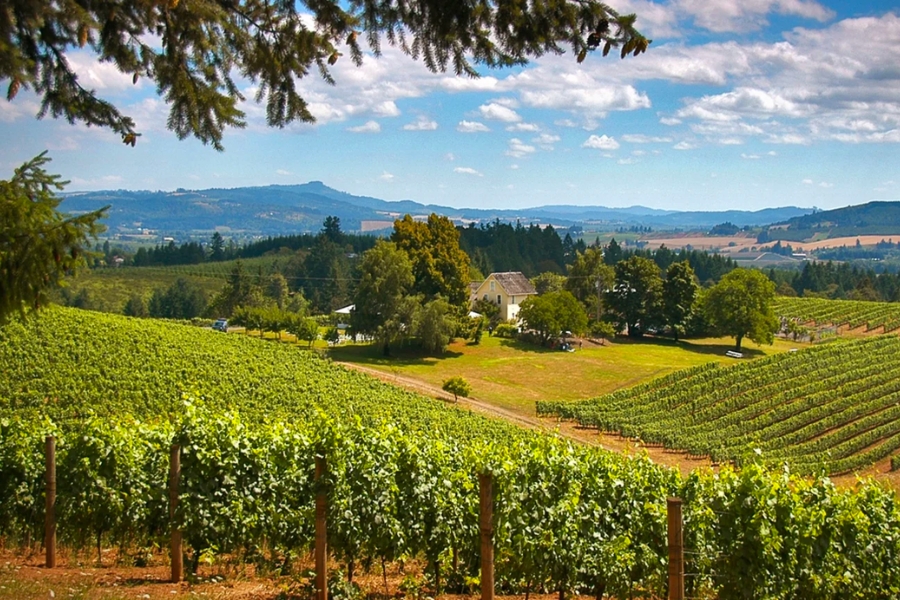
Nestled in the heart of the Willamette Valley, Salem Hills have witnessed the geological ballet of nature over eons. This place has an enticing blend of moderate elevations ranging from about 150 to almost 1,100 feet, with the serene Mill Creek meandering through, carving its way to the wider expanses of the Willamette Valley.
Its terrain is a canvas where past volcanic activities have painted a picture rich in minerals. Among the geological treasures are the Ferruginous Bauxite Deposits, a legacy of Miocene basalts.
Embarking on a rock-hunting adventure to the Salem Hills is like turning the pages of a living geological book. If you’re coming from the heart of Salem, take OR-22 E and continue on State St. Follow signs for Stayton/Sublimity for about 10 miles to get here.
Where we found turquoise at Salem Hills
The Ferruginous Bauxite Deposits in Salem Hills are notable for interesting minerals, including turquoise.
White River
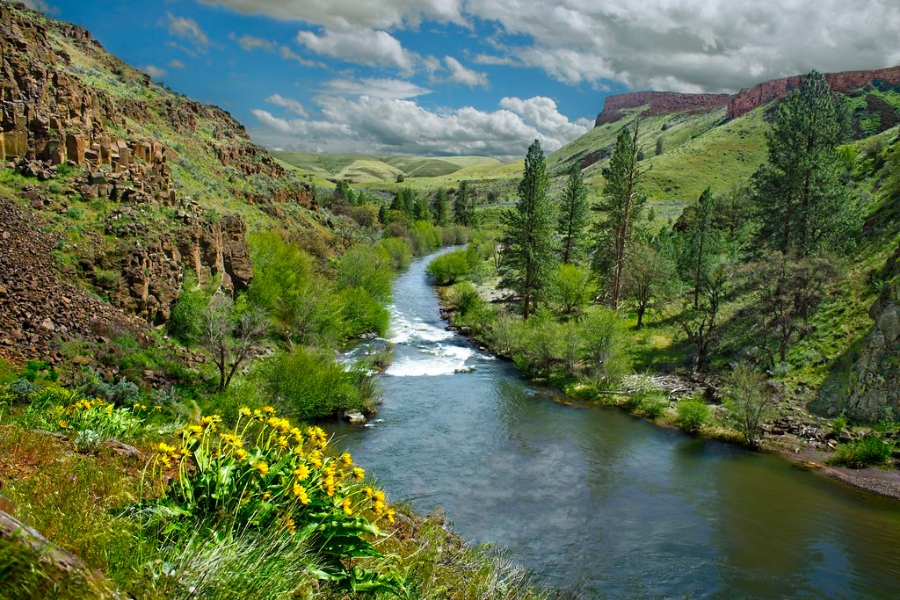
White River flows through regions rich in volcanic history. As you wander along its riverbanks, you’ll find yourself amidst a variety of rocks and minerals. The terrain around the river is a blend of forested areas and open lands, offering a picturesque backdrop for any activity, especially finding Oregon turquoise.
The geology of the area around White River is a palette of colors. Among its rocks, the elusive turquoise hides. The region’s volcanic history, with the right blend of minerals in the soil, creates a favorable environment for turquoise formation.
To reach this rocky wonderland, you would start your journey from the nearby town of Maupin. Take the US-197 S from Maupin and follow it to the White River Road.
Where we found turquoise at the White River
To find turquoise, explore White River’s riverbanks, nearby creeks, and areas with exposed bedrock. Its surrounding mountainous areas and other nearby locations that have a history of volcanic activity or sedimentary formations are also promising spots to explore.
Nehalem River
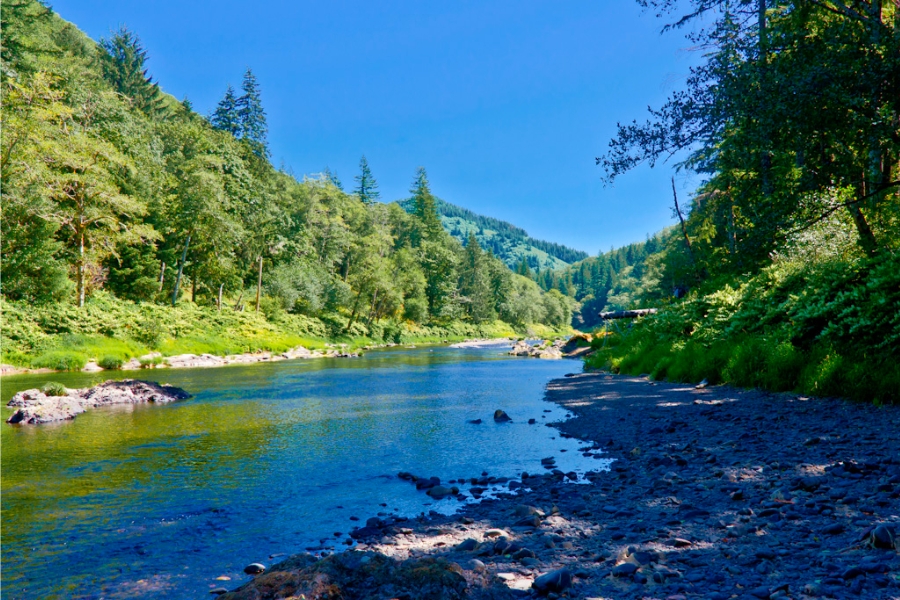
The Nehalem River, located on the Pacific coast, flows through a captivating landscape. Stretching about 119 miles long, it unveils the hidden beauty of the Northern Oregon Coast Range as it courses through, initially rising in the northeast corner of Tillamook County within the Tillamook State Forest.
This river’s vicinity is a paradise for rockhounds. The ancient volcanic activities here have paved the way for a diverse range of rocks and minerals, including turquoise. Its trails, scenic waterfalls, and old native forests only add to the allure of the place.
If you want to go here from Portland, take the U.S. Route 26 W and OR-53 S to the Nehalem River area. The journey itself is a prelude to the geological marvels that await, as the road winds through lush forests and alongside bubbling streams.
Where we found turquoise at Nehalem River
One of the best spots to seek out turquoise at the Nehalem River is along the public areas of the river near Timber Road and the Banks-Vernonia State Trail. The gravel beds and banks here are especially promising, housing colorful gems and other volcanic minerals and stones.
Common Turquoise-Hunting Questions
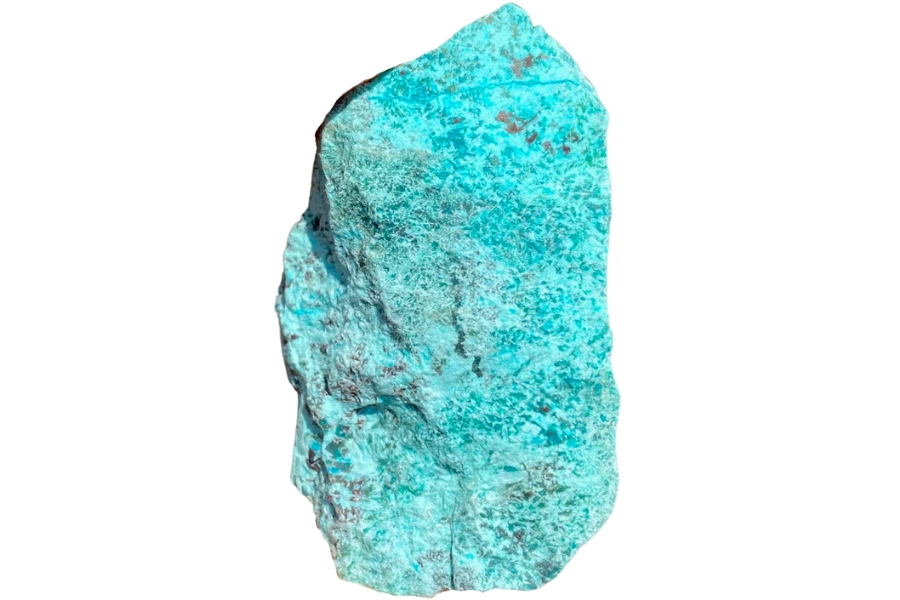
Before you head out here, it would help you to know the answer to the most common question when it comes to finding turquoise in Oregon:
Is it illegal to collect turquoise in Oregon?
Rockhounding, including the collection of rocks and minerals like turquoise for personal, non-commercial use, is generally allowed on public lands managed by the Bureau of Land Management (BLM) and the U.S. Forest Service, given certain conditions.
According to the BLM and the U.S. Forest Service, no permits are required for collecting rocks and minerals as a hobby as long as the materials are for personal use and not for sale.
However, there are specific regulations you need to adhere to, depending on the area you are collecting from. For more information on these, consult with the Oregon Department of Geology and Mineral Industries.
The Best Places To Buy Turquoise In Oregon
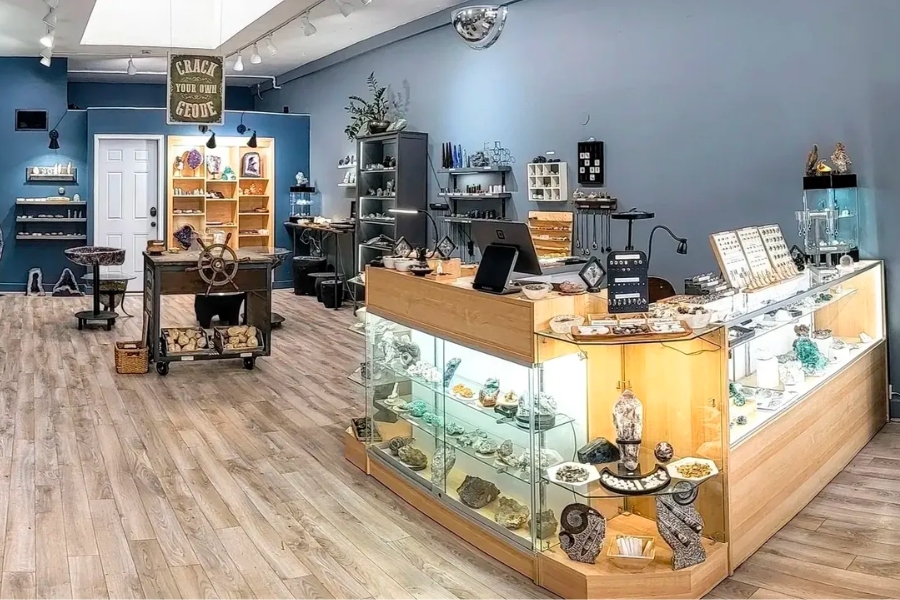
Another way you can find and possibly take home turquoise from Oregon and other parts of the world is by paying a visit to our trusted rock and mineral shops.
Be mindful that what you’ll find in the following places may be a combination of raw, polished, and cut turquoise. You may even find pieces that are already set in jewelry.
- 5 Elements Gem & Mineral – 2100 W Broadway, Eugene, OR 97402
- Mystery Gallery Rocks – 13750 SE McLoughlin Blvd, Oak Grove, OR 97222
- ORO – 3562 SE Hawthorne Blvd, Portland, OR 97214
- Portland Rocks – 6658 SE Milwaukie Ave, Portland, OR 97202
- Prehistoric Rocks Fossils Minerals – 1425 NW U.S. 101, Lincoln City, OR 97367
- The Fossil Cartel – 333 SW Taylor Street Suite 150, Portland, OR 97204

